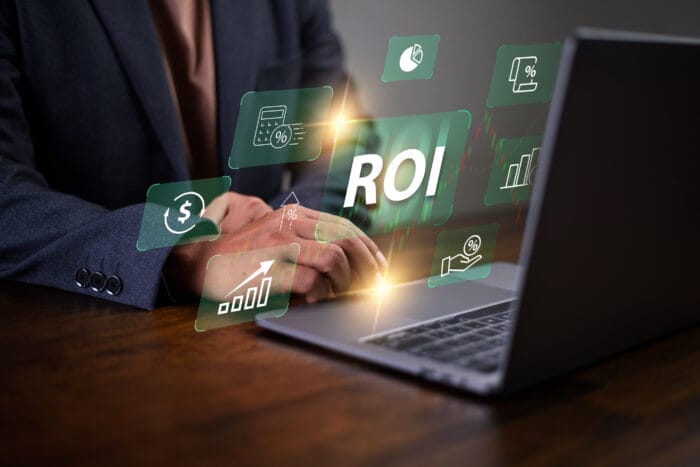Measuring Social Media ROI Beyond Likes and Shares
This article was published on September 18, 2025
Categorized in: Social Media
 There’s a lot more to measuring social media ROI than it may first appear. There are the obvious metrics, such as likes, shares, and follows, but there are other benchmarks that are a bit more behind the scenes that are also important. It all depends on what the overall goals are, and in some cases, there could be multiple goals that could be balanced. So, what goes into determining the ROI of a social media strategy? Here’s a look at everything you should be considering.
There’s a lot more to measuring social media ROI than it may first appear. There are the obvious metrics, such as likes, shares, and follows, but there are other benchmarks that are a bit more behind the scenes that are also important. It all depends on what the overall goals are, and in some cases, there could be multiple goals that could be balanced. So, what goes into determining the ROI of a social media strategy? Here’s a look at everything you should be considering.
Metrics Aligning with Business Goals
What are the business goals? This is always the first step when determining a social media strategy. Most businesses don’t have just one goal to consider. Usually, marketing departments are left to balance multiple objectives, so an individual pursuit like social media will also have to work within the big picture of not only the overall marketing strategy, but also to align with business goals.
Social media metrics that will align with business goals include reach, impressions, follower growth, engagement rate, and others. It all depends what the goals are. Assessing social media at this stage will require involving other departments, including company leadership, to assure that everyone is on the same page.
Track Direct Conversions from Social Media
You miss an opportunity to measure a vital piece of data if you don’t have conversion tracking turned on. Many track conversions for individual campaigns, but miss the chance to track conversations directly from social media to the home page or a campaign landing page. The more conversion data you have, the better your assessments will be.
Besides, conversions are an obvious and direct marker of ROI, especially if you also have revenue data on top of that so that you can track a customer’s individual journey. The more conversion data you have, the better you can assess how well your campaigns are doing.
Measure Engagement with Target Audience
Directly measuring social media engagement from with the target audience is also an important piece of date that should be assessed. After all, it’s this audience that could eventually become paying customers. Here are some metrics that will help you determine engagement:
- Engagement rate. Assessed by looking at comments, shares, likes, follows, and more. It shows how active your following is when you post.
- Audience demographics. Demographics data is gold, especially when it comes to social media. You can use this information to determine if your campaigns are on the right track.
- Follower quality. Having a high follower list won’t necessarily help you achieve your goals unless your followers are of a high quality. What is the percentage of engaged followers who align with your target audience?
- Click-through-rate. When you post a link, how many people click? You need to measure everything you can, including home page clicks, clicks to landing pages, and even clicks to other profiles and social media sites.
As you can see, measuring ROI is a multi-faceted effort that needs to align with business objectives. Measuring ROI isn’t as simple as it may have first appeared.
LIKE AND SHARE THIS ARTICLE:
About the Author: Brick Marketing President, Nick Stamoulis
 Nick Stamoulis is President of Brick Marketing and has over 25 of years digital marketing experience. He specializes in solving complex digital marketing challenges through SEO, content marketing, social media, PPC, email marketing, SEO for AI (GEO) and conversion optimization.
Nick Stamoulis is President of Brick Marketing and has over 25 of years digital marketing experience. He specializes in solving complex digital marketing challenges through SEO, content marketing, social media, PPC, email marketing, SEO for AI (GEO) and conversion optimization.




